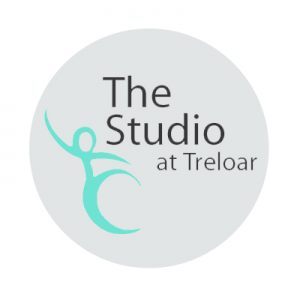Kids Causing you Back Pain? Four Simple Exercises to Help

 Sometimes being a mom is a pain in the back – literally. Between the bending and the lifting, the carrying and the chasing, contorting yourself to breastfeed and the nights your toddler climbs into bed with you, it can feel like back pain just comes with the territory. If you can relate, we have good news for you. We recently connected with Jennifer LaRoy, Physiotherapist and Clinical Pilates Instructor at The Studio at Treloar here in Vancouver, to talk back pain.
Sometimes being a mom is a pain in the back – literally. Between the bending and the lifting, the carrying and the chasing, contorting yourself to breastfeed and the nights your toddler climbs into bed with you, it can feel like back pain just comes with the territory. If you can relate, we have good news for you. We recently connected with Jennifer LaRoy, Physiotherapist and Clinical Pilates Instructor at The Studio at Treloar here in Vancouver, to talk back pain.
“Definitely, back pain is common for moms. It can be lower back pain or mid back pain. It varies depending on what is bringing on the pain, but certainly it’s very common. It can be from postural changes throughout pregnancy, to the way you hold your baby afterward, to the way you feed, or holding your baby on your hip and trying to do something else. There’s a whole host of reasons,” explains Jennifer. But what can we do about it? She shared four simple exercises that moms can do to help with back pain. If you could use a little relief, read on, because we’re here to help!
Four Simple Exercises to Help With Back Pain
1. Learn to Breathe Correctly

“In my experience, a lot of women have a backwards breath pattern,” says Jennifer. “Instead of allowing their diaphragm to relax and open up, as they breathe in, they’re tightening their diaphragm and lifting it up, so it’s restricting how they’re breathing.” We especially love this tip, because working on your breathing is something all of us can find time for, no matter how busy we are.
2. Find True Alignment

If you’re experiencing back pain because you’re out of alignment, Jennifer has an exercise for you. “A really easy stretch that I like to give people for re-aligning and getting your side stretched out is called the mermaid. It’s very easy, and you can do it sitting or standing. If it’s the right side that you want to stretch, you would reach that right arm up and over. Think about creating length through your back, and an even curve, so you’re not hinging at any one level. You’re not shifting your hip out and just bending to the side. Imagine that right from the tail bone all the way to the head is being stretched. When you’re doing that make sure your rib cage is aligned with your hips, and you’re not shifting your upper chest forwards.” Then take a deep breath into your rib cage, and exhale to return to neutral.
3. Squat the Right Way

4. Work Your Pelvic Muscles
We’ve all heard the advice about doing your Kegel exercises. But did you know they can help with back pain? Jennifer explains, “I would also suggest for every woman post-pregnancy to learn correct pelvic floor strengthening. Most women are told to go home and do Kegel exercises, but a lot of women don’t feel that they’re doing it properly, or know what exactly they’re doing. Either they’re not having a lot of sense of those pelvic floor muscles, or I see a lot of women bearing down. You’re creating extra intra-abdominal pressure, which is opposite to what we want to do with the pelvic floor exercise. Problems with the pelvic floor can be one of the creators of back pain, because of where the muscles are attached, and how they function in the body.”

Jennifer had more to add on pelvic floor strength, saying, “If any women are really struggling with pelvic floor exercises, or really struggling with incontinence and it’s been quite a while after pregnancy, I would suggest seeking out a pelvic floor physio. It is common to have incontinence, it’s common to have a weak pelvic floor or a tight pelvic floor, but it’s not normal in that it can be corrected. A lot of people think it’s normal, everybody gets it, so we just deal with it. I say no! The neuro-muscular system can be retrained, just like anything else in the body, and it should be. It’s important, and you don’t have to deal with this.”
Thank you so much, Jennifer, for all of your suggestions on dealing with back pain. Here’s to a life with kids that isn’t a literal pain in the back!
 This article was sponsored by The Studio at Treloar, a Vancouver-based Pilates studio run in partnership with Treloar Physiotherapy Clinic. Our instructors are registered physiotherapists certified to teach Pilates. As a Clinical Pilates instructor Jennifer LaRoy combines manual therapy, Pilates and her experience in women’s health to help moms feel stronger, more connected and pain-free before and after birth. We recognize many moms never feel quite the same after giving birth but we can help you get back to a place where you feel confident mentally and physically. Our private sessions focus on strengthening the core, realigning the spine and keeping the pelvic floor strong. Pilates is safe for women who have had cesarean delivery or diastasis recti, however if you have any questions about your specific situation please give us a call or email us at [email protected].
This article was sponsored by The Studio at Treloar, a Vancouver-based Pilates studio run in partnership with Treloar Physiotherapy Clinic. Our instructors are registered physiotherapists certified to teach Pilates. As a Clinical Pilates instructor Jennifer LaRoy combines manual therapy, Pilates and her experience in women’s health to help moms feel stronger, more connected and pain-free before and after birth. We recognize many moms never feel quite the same after giving birth but we can help you get back to a place where you feel confident mentally and physically. Our private sessions focus on strengthening the core, realigning the spine and keeping the pelvic floor strong. Pilates is safe for women who have had cesarean delivery or diastasis recti, however if you have any questions about your specific situation please give us a call or email us at [email protected].
Amber Strocel is a writer, aspiring math teacher, suburbanite, wife and mom of two. She believes in the power of the Internet to connect people, and she believes that numbers are the poetry of the universe. You can often find her knitting, sewing, volunteering, working in her garden, and sneaking chocolate when no one's looking. She blogs at Strocel.com and shares her photos on Instagram as @AmberStrocel.



















